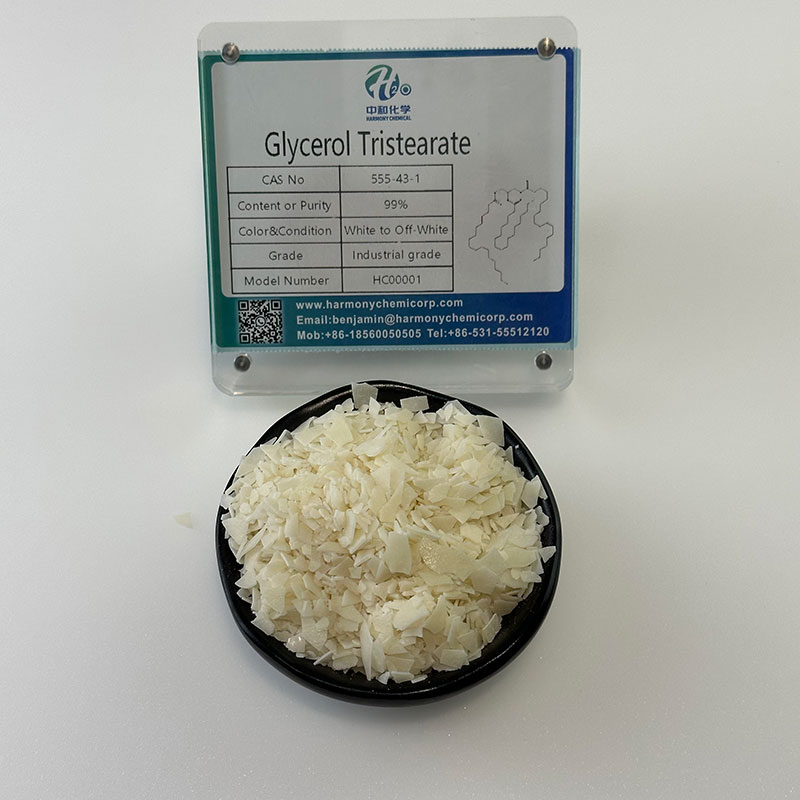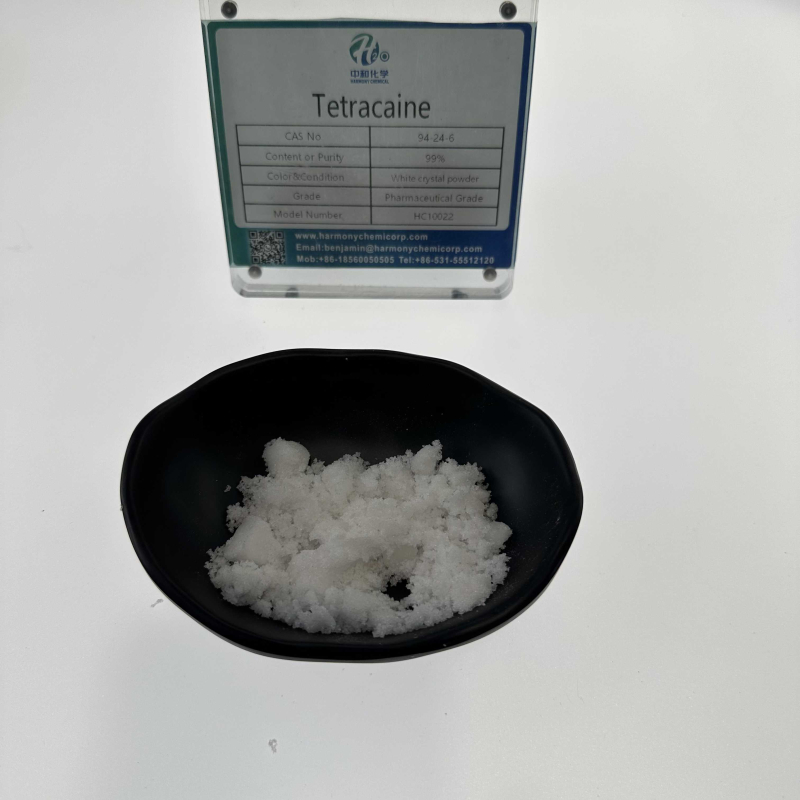CAS NO104-47-2Molecular formulaC9H9NOmolecular weight147.17melting point8 °Cboiling point286-287 °Cdensity1.085 g/mL at 25 °CStorage conditionsSealed in dry,Room TemperatureformLiquidcolourClear colorless to slightly yellowpH value4.5 (100g/l, H2O, 20℃)suspension
Contact Now
nameTofacitinibCAS NO477600-75-2Molecular formulaC16H20N6Omolecular weight312.38density1.3Storage conditions-20°CsolubilitySoluble in DMSO (up to 100 mg/ml) or in Ethanol (up to 100 mg/ml).formPale powder.Acidity coefficient (pKa)6.04±0.60(Predicted)colourOff-white
Contact Now
Coconut oil is recognized as the "healthiest oil on Earth". Coconut oil, as a medium chain fatty acid, has drastically special physiological consequences on the human physique in contrast to the often discovered lengthy chain fatty acids in our food. The saturated fatty acids in coconut oil are on the whole medium chain fatty acids.
Contact Now
nameNitazoxanideCAS NO55981-09-4Molecular formulaC12H9N3O5Smolecular weight307.28melting point202°Cdensity1.629 g/cm3Storage conditions2-8°CsolubilitySoluble in DMSO (>50 mg/ml)formsolidcolourOff-white
Contact Now
nameClorsulonCAS NO60200-06-8Molecular formulaC8H8Cl3N3O4S2molecular weight380.66melting point194-203°Cboiling point651.7±65.0 °C(Predicted)density1.800±0.06 g/cm3(Predicted)Storage conditionsKeep in dark place,Inert atmosphere,2-8°CformneatcolourWhite
Contact Now
name3-Amino-1-hydroxyadamantaneCAS NO702-82-9Molecular formulaC10H17NOmelting point265 °Cboiling point266.8±23.0 °C(Predicted)density1.252±0.06 g/cm3(Predicted)Storage conditionsKeep in dark place,Inert atmosphere,Room temperaturesolubilityDMSO (Slightly), Methanol (Slightly)formCrystalline PowdercolourWhite to yellow
Contact Now
ApplicationsGlyceryl tristearate is an ester derivative, which can be used as food emulsifier, brightener, greasing agent, lubricant, defoamer, and also in various cosmetics.ToxicityIt is safe within the limits mentioned above (FDA, 2000).Use limitAs a crystallization catalyst for cocoa butter 1%; as a molding aid 0.5% to 3%; as a winterizing treatment agent for fats and oils 0.5% (FDA §172.811, 2000). Can be used as gum gum-based substance (GBChemicalbook2760-96).Chemical propertiesColorless crystal or powder. Odorless. Slightly sweet. Relative density (d480) 0.862.
Contact Now
applicationNickel acetate is frequently used as a metallic catalyst in natural chemistry. Commercialized nickel acetate is frequently its hydrate, which can be used to catalyze coupling reaction, discount reaction, etc. It is extensively used in metallic natural reaction, nickel plating, metallic coloring, and drug molecule preparation.Mainly used as mordant and additionally for electroplatingStorage precautions: Store in a cool and ventilated warehouse.
Contact Now
nameFlubendazoleCAS NO31430-15-6Molecular formulaC16H12FN3O3molecular weight313.28melting point290°CStorage conditions2-8°Cdensity1.3720Acidity coefficient10.66±0.10formneatcolourWhite to Off-White
Contact Now
nameLinezolidCAS NO165800-03-3Molecular formulaC16H20FN3O4molecular weight337.35melting point176-1780CSpecific RotationD20 -9° (c = 0.919 in chloroform)boiling point585.5±50.0 °C(Predicted)Storage conditionsroom tempformpowdercolourwhite to off-white
Contact Now
Chemical factor structure mannequin of petroleum resin:The most commonly used petroleum resin manufacturing applications are C9 petroleum resin and C5 petroleum resin.C9 petroleum resinC9 petroleum resin mainly refers to a resinous substance formed via polymerization of olefins or cyclic olefins containing nine carbon atoms or copolymerization with aldehydes, fragrant hydrocarbons, terpene compounds, etc.C9 petroleum resin, also acknowledged as aromatic petroleum resin, can be divided into sorts such as hot polymer
Contact Now
name5-FluorouracilCAS NO51-21-8Molecular formulaC4H3FN2O2molecular weight130.08boiling point190-200°C/0.1mmHgdensity1.4593 (estimate)Storage conditions2-8°CsolubilityH2O: 10 mg/mL, clearformpowdercolourwhite
Contact Now
Melting point1975 ° CBoiling point1949.9 ° C (estimated)Density5.6Refractive index2.008~2.029Flash point27 ℃Storage conditionsStoreat+5 ° Cto+30 ° CSolubility0.0016g/linsolubleFormnanopowderColorWhiteChemicalbooktopaleyellowSpecific gravity5.61Zinc oxide, additionally recognized as zinc white, is a pure white powder composed of amorphous or needle fashioned small particles.
Contact Now
nameTetracaineCAS NO94-24-6Molecular formulaC15H24N2O2molecular weight264.36melting point41.0 to 45.0 °Cboiling point407.59°C (rough estimate)Storage conditions2-8°CAcidity coefficientpKa 8.33±0.03(H2O
t = 20.0
I = 0.10 (KCl)) (Uncertain)formpowder to crystalcolourWhite to Almost whiteIntroduction: Dicaine is a white crystalline or crystalline powder, odorless, slightly bitter in taste, and has a tingling sensation. Soluble in water, soluble in ethanol, insoluble in ether or benzene.
Contact Now
Oil soluble nano iron 1% - 10%, naphthenic acid 5% - 25%, barium naphthenate 10% - 30%, polyisobutene succinimide 5% - 10%, long-chain fatty acid 1% - 5%, and the relaxation is solvent. The instruction technique is as follows: add naphthenic acid drill, barium naphthenate, oil soluble nano iron and long-chain fatty acid into the solvent in flip at room temperature in accordance to the ratio, stir evenly, and then add polyisobutylene succinimide to stir evenly.
Contact Now
Fusing Point8.2 °CBoiling Point224-226 °C (lit.)Thickness1.056 g/mL at 25 °C (lit.)Vapor pressure<1 hPa (20 °C)Refractivity22n20/D 1.472(lit.)Flash Point220 °FStorage ConditionsStore at +5°C to +30°C.Solubilitytoluene: soluble(lit.)1,3-Dimethyl-2-neneneba imidazolinone can be used as solvent in many natural synthesis and conversion reactions; Used to learn about the formation of steady functionalized hydrogenated silane double base transition metallic complexes thru photochemistry from fragrant silanes; Dipolar solvents with p
Contact Now
nameTopiroxostatCAS NO577778-58-6Molecular formulaC13H8N6molecular weight248.24boiling point594.7±60.0 °C(Predicted)density1.45±0.1 g/cm3(Predicted)Storage conditionsStore at -20°CsolubilityDMSO : 23.5 mg/mL (94.67 mM; Need ultrasonic and warming)Acidity coefficient (pKa)7.47±0.10(Predicted)formPowder
Contact Now
nameAlectinibCAS NO1256580-46-7Molecular formulaC30H34N4O2molecular weight482.62melting point274-276°Cboiling point722.5±60.0 °CStorage conditions-20°Acidity coefficient (pKa)13.70±0.40(Predicted)formsolidcolourcolour
Contact Now
Polyvinyl alcohol resin (PVA) aqueous answer has awesome moldability and emulsifying properties, forming a movie with amazing adhesion, solvent resistance, friction resistance, tensile strength, and oxygenbarrier properties.Solubility: Soluble in water, typically heated to 65-75 ℃ for whole dissolution. Insoluble in gasoline, kerosene, vegetable oil, benzene, toluene, dichloroethane, carbon tetrachloride, acetone, ethyl acetate, methanol, ethylene glycol, etc. Slightly soluble in dimethyl sulfoxide.
Contact Now
Appearance white block or powderAsh content/% ≤ 0.01 0.01 0.01 0.01The softening factor is 83~143 ℃. Soluble in acetone, toluene, cyclohexane, ethyl acetate, tetrahydrofuran, dichloromethane, etc., insoluble in solvent gas and water
Contact Now
Thermoplastic resin, hydrolyzed into polyvinyl alcohol in acid or alkaline solvents, is the main raw material for preparing polyvinyl alcohol. When molecules contain photosensitizers, they are sensitive to light and undergo decomposition reactions under the action of ultraviolet light or electron beams, exhibiting positive photosensitive resin properties. It can copolymerize with various monomers with double bonds, introducing various functional groups and possessing different properties.
Contact Now
nameLOXO-292CAS NO2152628-33-4Molecular formulaC29H31N7O3molecular weight525.6density1.36±0.1 g/cm3(Predicted)Storage conditionsStore at -20°CformA crystalline solidAcidity coefficient (pKa)14.00±0.29(Predicted)
Contact Now
Due to the shortcomings of urea formaldehyde resin such as terrible preliminary viscosity, massive shrinkage, excessive brittleness, water resistance, handy aging, launch of formaldehyde, and air pollution of the surroundings and injury to fitness in the course of curing, it is integral to regulate it to enhance its overall performance and increase its application.
Contact Now
English nameAmmonium Zirconium HexafluorideCAS16919-31-6Molecular formula(NH4)2.ZrF6Molecular weight241.29Density1.15g/mLat 25°C(lit.)Water-solubility287.7g/L at 20℃Storage conditionsRoom TempratureAppearanceWhite crystalsmolecular structure:
Contact Now





























